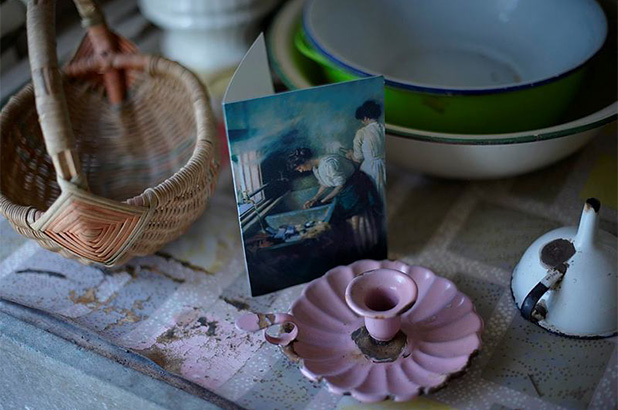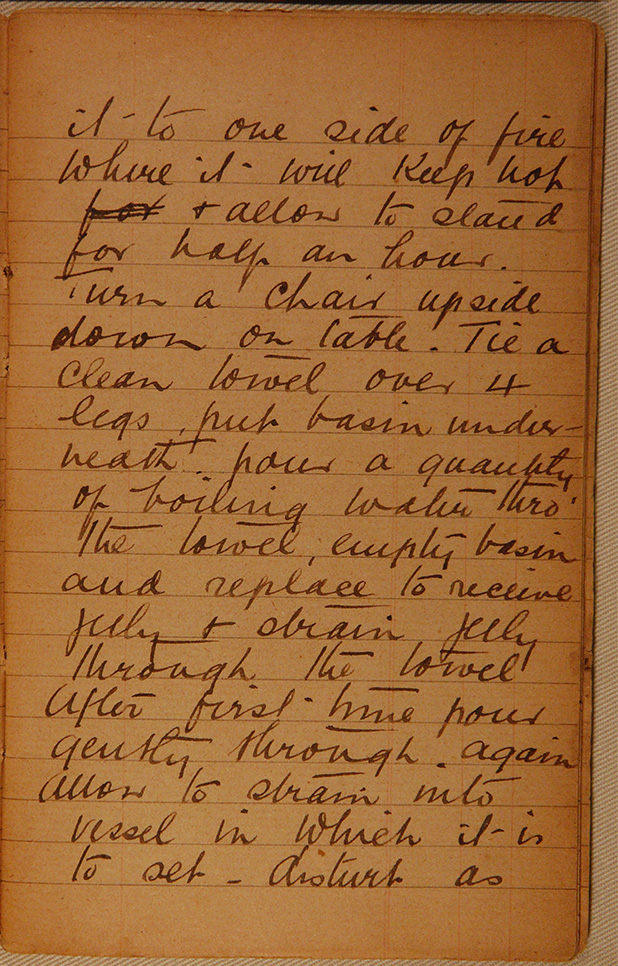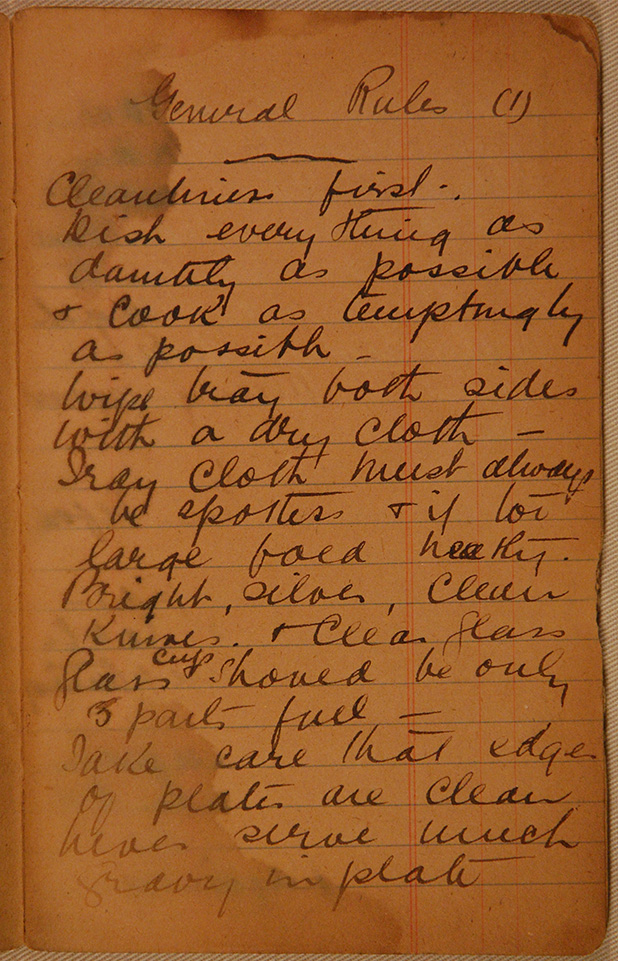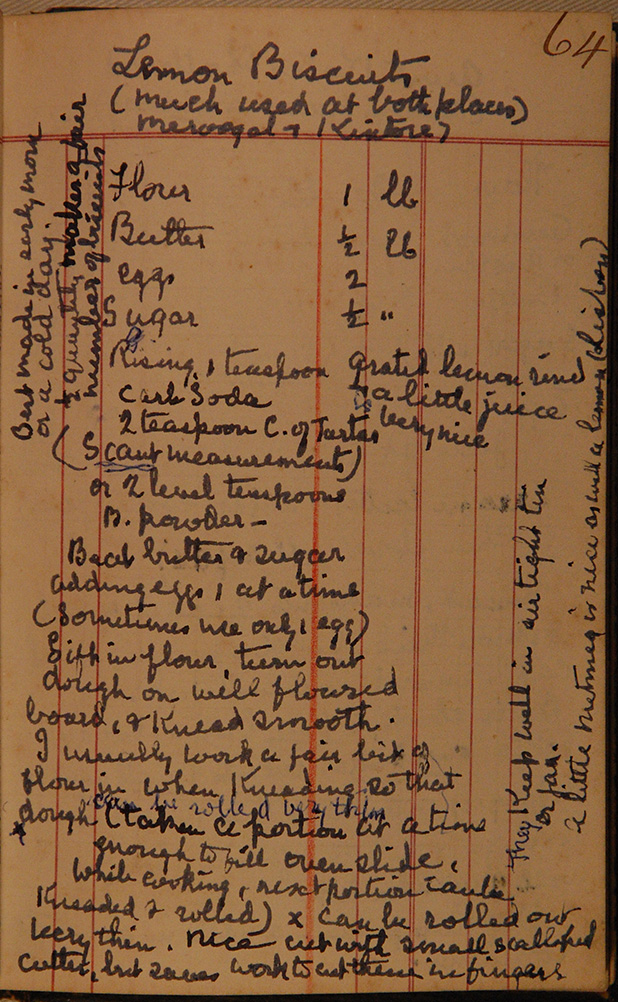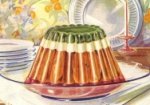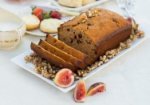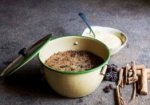Our volunteer, Bethany Leyshon, shares with us some recipes, tips and long lost techniques that piqued her curiosity while transcribing handwritten books from Meroogal….
Recently I have had the pleasure of helping the Eat your history team by transcribing several of the handwritten recipe books from the Meroogal collection. Whilst tricky at times (often requiring some detective work through Google) I have managed to uncurl the loopy letters, dot the i’s and cross the t’s and uncover some really amazing and somewhat fascinating things.
Lost techniques
The first one that comes to mind was in a jelly recipe. Nothing really seemed out of the ordinary until I reached these instructions:
“Turn a chair upside down on table. Tie a clean towel over 4 legs. Put basin underneath.”
Wait, what? I’ve never seen those instructions on an Aeroplane jelly packet before. I love that this recipe involves culinary construction. The jelly was then strained through the towel into the basin and allowed to set.
Or how about making “toast water” for your guests? MmmmMmmmm. It is, as the name suggests, water flavoured with toast. The toast was browned all over and then soaked in cold water for a few hours to get a beverage “the colour of sherry” (to trick everyone I’m sure). Apparently it is a very refreshing drink.
There have also been a few terms that I’ve been less than familiar with – for example ‘icinglass.’ For a while I thought they meant icing-less, however with a bit of research I discovered that icinglass (or isinglass) is made from the “dried swim bladders of fish” and was commonly used in blancmange – which just happened to be the recipe I was transcribing!
Handy hints
Interestingly, these recipe books were not just limited to cooking recipes. There are “general rules” for food preparation and recipes for stain removals and cleaning products. For example, a method for stain removal can be found in stuck into the back of one of the handwritten recipe books recommending “cold water for stains of sugar, syrup & meat juice but hot water for vegetable & various fruit stains.” Clearly the women of Meroogal cooked so much it was handy to have the way to remove stains in the cookbooks themselves! And did you know that it was a general rule to strain all milk beverages, but never into the vessel in which they were to be served. You should wipe meat with a hot cloth before cooking, only fill glasses “3 parts full” and clean any utensil used in fish preparation immediately. However, one of my favourite rules is to “dish everything as daintily as possible and cook as temptingly as possible.” In fact, many of the recipes include pointers on how to serve and garnish them. A recipe for “Potato Croquettes” asks the maker to “insert a stalk of parsley to represent stem. Place on a d’oyley [sic] or folded serviette & garnish with tiny sprigs of parsley.”
Lastly, I love finding all the little hints that are scrawled up the side of recipes or in squished in-between lines, offering tried and tested advice. It adds another level of ‘realness’ – that these recipes really were being used and revised regularly and passed on to other family members. For example, when crumbing things, adding two teaspoons of water to the egg mixture will make it go further. If you don’t have castor sugar, just “run ordinary sugar thro mangle between strong paper or cloth” and when making Lemon Biscuits, they are “best made in early morn on a cold day.”
After transcribing many of these recipes, I wish I was a better cook and had better handwriting, but mostly I’ve come to appreciate what it must’ve been like at Meroogal, making lemon biscuits on frosty mornings, presenting guests with an array of delicious treats, or cooking for the family when they were sick. I hope that now you too have a bit of a taste for life at Meroogal.
You can see original manuscript recipes from Meroogal on display at Eat your history: a shared table, on now until the 9 March 2014 at the Museum of Sydney .
